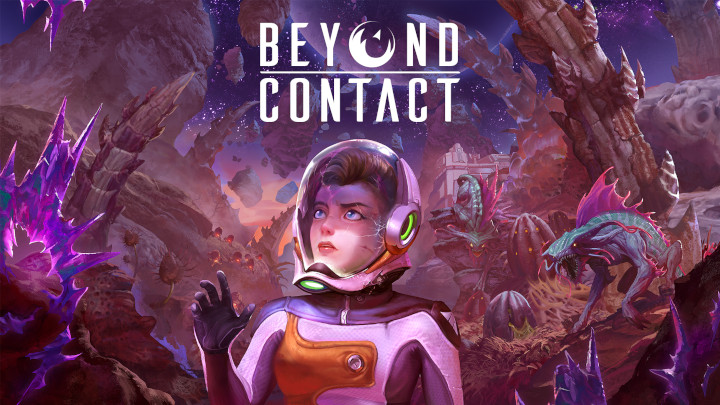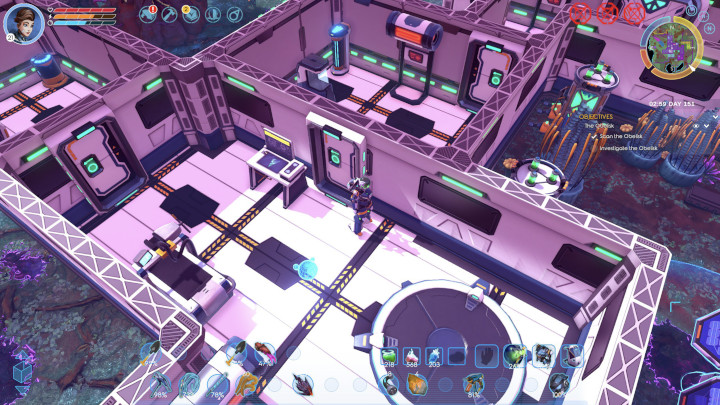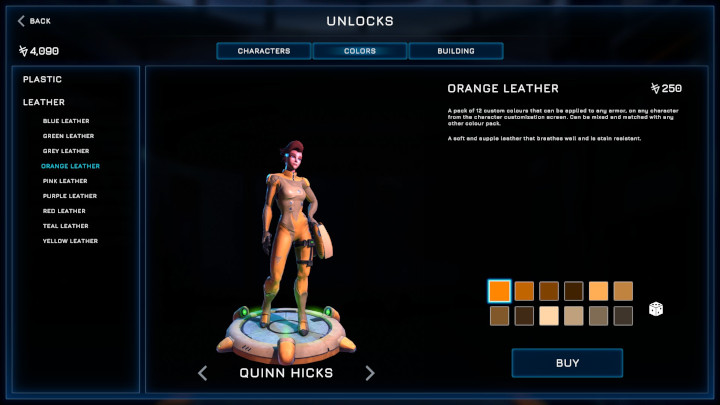
Sometimes, the price of a game will totally change the way you feel about the content of that game. I mean, you expect something totally different from a $70 game than you would from a $20 game, right?
Take Beyond Contact, for example. If I would have paid $70 for this — or even like $40 — I think I would have said that it feels a little undercooked but that it’s also showing a lot of promise. But this actually costs a cool $14.99 (and at the time of this writing, it’s on sale for an even cooler $9.89.) For ten or fifteen bucks, Beyond Contact is absolutely worth the asking price. In fact, I think Playcorp and Deep Silver could have asked for $20 or even $22.50 for this. I would probably draw the line somewhere before $25, though.
Beyond Contact is one of those survival buildy-crafty games that’s been all the rage since Minecraft and DayZ became such massively successful properties (has it been more than a decade already?) The difference, I suppose, is that this one takes place on an alien world, and that it’s also played from a Diablo-style top-down perspective. It’s almost like a Diablo-like take on No Man’s Sky (though without all of No Man’s Sky‘s planet-hopping — Beyond Contact takes place on a single planet called Ketern).

The camera angle doesn’t change a lot about the basic gameplay loop, though I do think it makes it feel a little more awkward to play than it needs to. I always felt like I wish I could zoom the camera out a little bit further, and I did struggle to aim my weapons with a controller. The character tends to spin just a little too slowly, so when you want to shoot something behind you, you’ll have to allow a little bit of extra time for them to turn all the way around, otherwise you’ll shoot off to the left or the right of where you were intending to.
But neither of those issues is a dealbreaker for a fifteen-dollar video game, and I ended up really enjoying my time with Beyond Contact. According to Steam, I’ve played this one for about 16 hours so far, and I don’t feel like I’m done with it yet.
This game does have a series of quests that tell an over-arcing narrative, but I honestly never felt all that invested in the story. The thing that hooked me was the drip-fed crafting mechanic. As you collect and scan various plants and minerals in the game, you will earn data, which can be spent buying new crafting recipes and building blueprints. This happens slowly enough that you’re not overwhelmed with new recipes all the time, but fast enough that you always feel like you’re making progress.

I feel like the game really starts cooking once you establish a base (which the game sort of nudges you to do early in the story). Before that point, you can feel a bit lost and purposeless, but when your first base is complete, you suddenly feel connected to Ketern in a way that might surprise you. You’ve actually claimed a piece of land, and now it’s yours to develop and nurture. Plus, you’ll have a place to store the extra junk that you’ve been collecting (in case you need it later) and wait out the game’s brutally cold nights.
Actually, that brings me to another one of my gripes about Beyond Contact: I do think the survival mechanics are a little too brutal. While I did manage to get my hunger meter under control eventually (by planting massive farms outside my base), there was a point when I was spending most of my time just wandering around looking for food and oxygen. This can be a distraction from the true joy of just building and expanding your base while you continue to learn fresh recipes.
Again, this was certainly not enough to turn me off of the game, but it does seem like there could be some balance changes to reduce the rate at which you starve or run out of oxygen.
Oh, and there’s also a weirdly implemented cosmetic system that I want to talk about for a bit. See, the game gives you credits for completing daily quests and for simply surviving each night. You can then spend these on cosmetic upgrades that mostly amount to color-swapped versions of whatever you’re wearing. There are also additional characters to purchase in case you’re not a fan of Quinn Hicks, the default protagonist. I found her accent to be adorable, so I didn’t want to experiment with the other available options for myself, but maybe the reptilian Kangah or the white-haired Professor Zaine is more your speed — it’s up to you.

Personally, this whole system feels kind of tacked on, and it’s easy to just ignore it completely (like I did, for the most part). Still, I am a little nervous that Playcorp intends to monetize the game by selling the credits for real-world money while adding more characters and color options to the game. I guess it doesn’t affect me too much, because I’m fine with the default options, but the whole thing feels like a piece of another video game that was just randomly duct-taped onto Beyond Contact‘s main menu. It’s kind of startling, almost, once you realize it’s there.
With all that said, I really enjoyed my time with Beyond Contact so far, and I plan on investing more time in it. I do hope Polycorp plans on continuing to update the game far into the future, because this feels like the very beginning of something interesting. In it’s current state, it doesn’t quite feel like a 1.0 build to me, but then again, it’s super inexpensive, so there’s no reason to expect something extremely fleshed out. At the same time, there’s some real potential here, and with a couple more years of development, this could really grow into something special. I guess we’ll have to wait and see if Polycorp and Deep Silver are in this one for the long haul.
Disclaimer: I was given a review code for Beyond Contact for Steam, but the opinions expressed in this article are my own.